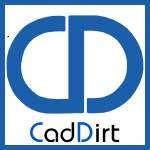SolidWorks:Heard! - Episode 378 - SolidWorks on Windows 8
/SolidWorks on Windows 8:
This podcast covers the new release of Windows 8 Consumer Preview, what is really different, what is the same, and how SolidWorks current lineup installed on the OS. Topics covered:
- Downloading, installing and testing
- More Windows8 resources
- Building Windows 8 (Steven Sinofsky's blog)
- WinSuperSite (Paul Thurrott's blog)
- AllAboutMicrosoft (Mary Jo Foley's blog)
- Windows Weekly (TWiT podcast)
- Major differences with Windows 8 vs. Windows 7
- What has stayed the same
- Installation experience of SolidWorks current product line
- Thoughts about how SolidWorks could use the new Metro UI
Last week Microsoft launched the consumer preview of their next operating system, Windows 8. Since the launch of XP, I have installed early builds of these operating systems, testing the install of the current line up from SolidWorks for compatibility. Back in October I installed the Developer preview of Windows 8 but the product was not as far along and much could still be tweaked so I opted to wait to test out SolidWorks.
With Windows 8 bringing the "touch first" approach to the user with the new Metro UI, this changes the experience and removes something many users have gotten used to since 1996, the Start button. With the start menu being removed and replaced with a Metro Start Menu, there is a lot of potential to positively change the way we think about finding, launching and using applications in the new operating system.
The SolidWorks product line faired well, especially since it is considered a "classic" application and would run in the desktop mode, essentially feeling right at home as though it was Windows 7. I talk about the install and the little differences as it installed into Windows 8. ~Lou
Remember to check out the SolidWorks: Heard! Blog and to follow me on Twitter, Facebook and THE HEaRD!

